Categories: Sharing experience, Autonomous power supply
Number of views: 114418
Comments on the article: 7
How to do the exhaust gas generator yourself
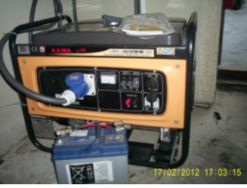 In previous articles, we examined how to automate the start-up of gasoline diesel or gas generators. Generators are most often placed indoors. One of the important, and for someone rather complicated moments of installation of mini-power plants, is the problem of exhaust gas exhaust.
In previous articles, we examined how to automate the start-up of gasoline diesel or gas generators. Generators are most often placed indoors. One of the important, and for someone rather complicated moments of installation of mini-power plants, is the problem of exhaust gas exhaust.
In this article, we will demonstrate step-by-step how to remove exhaust gases from the generator.
So what we have.
1) Gasoline generator KAMA (KIPOR) KGE 6500 E. As already noted, a very successful model. Value for money is just super))).
2) Corrugation. As a corrugation we use a bellows to connect hot water. As practice shows, three years of successful work are provided, the corrugation easily tolerates high temperatures and vibration of the generator.
3) Paste - sealant. In this case, used asbestos-cement paste, used to seal auto mufflers.
4) Two meters of pipe of the corresponding section, but not less than at the outlet of the generator silencer.
5) Two clamps for fixing the pipe to the wall.
6) The necessary tool, straight arms and a couple of hours of free time.
Action plan.
To begin with, we need to connect the coupling from the corrugation to the exhaust pipe of the generator silencer. For convenience, we unscrew the plate, which protects us and the surrounding objects from accidental contact with a hot muffler.
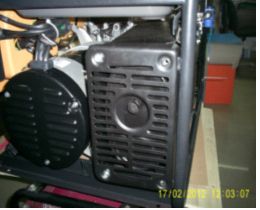
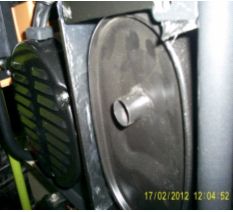
In order to connect the clutch, we drill 3-4 holes in a circle, first in the clutch, then in the generator silencer pipe itself.

If you do not find a corrugation and a coupling of a suitable diameter, order an adapter of the appropriate diameter from the turner, this will greatly simplify the task and at the same time significantly increase the reliability of the whole structure as a whole.

After attaching the adapter, screw the protective plate into place. To prevent the penetration of the exhaust gases of the generator, with a paste - sealant we hammer the seam between the pipe of the silencer of the generator and the adapter.
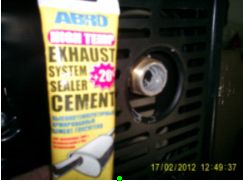
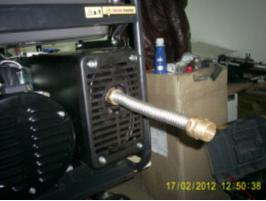
As a result, we get such a variant of a generator with a vibration-damping transition corrugation.
The next stage of our work is the removal of exhaust gases outside the premises. To do this, make a hole of the corresponding diameter in the wall of the room. Next, install the generator in its permanent place, connect with pre-prepared pipes. We fix the pipe to the wall by means of clamps. As a result, we get about this option.
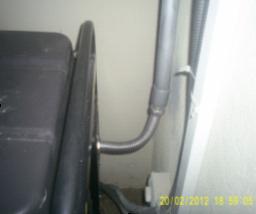
To give a decent appearance to the whole structure, paint the pipe with heat-resistant paint.
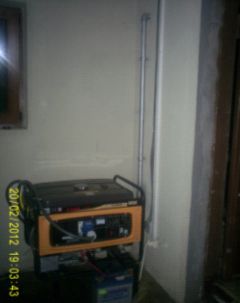
Attention. In order for the generator engine not to lose its already small power, the pipe diameter must be taken 20-30% more than the diameter of the generator outlet pipe. If possible, the common trunk should be as short as possible. Also, do not make too many corners, one maximum two corners. With each angle, the generator power drops by 10-15%. Good luck
Sergey Seromashenko
See also at bgv.electricianexp.com
:
